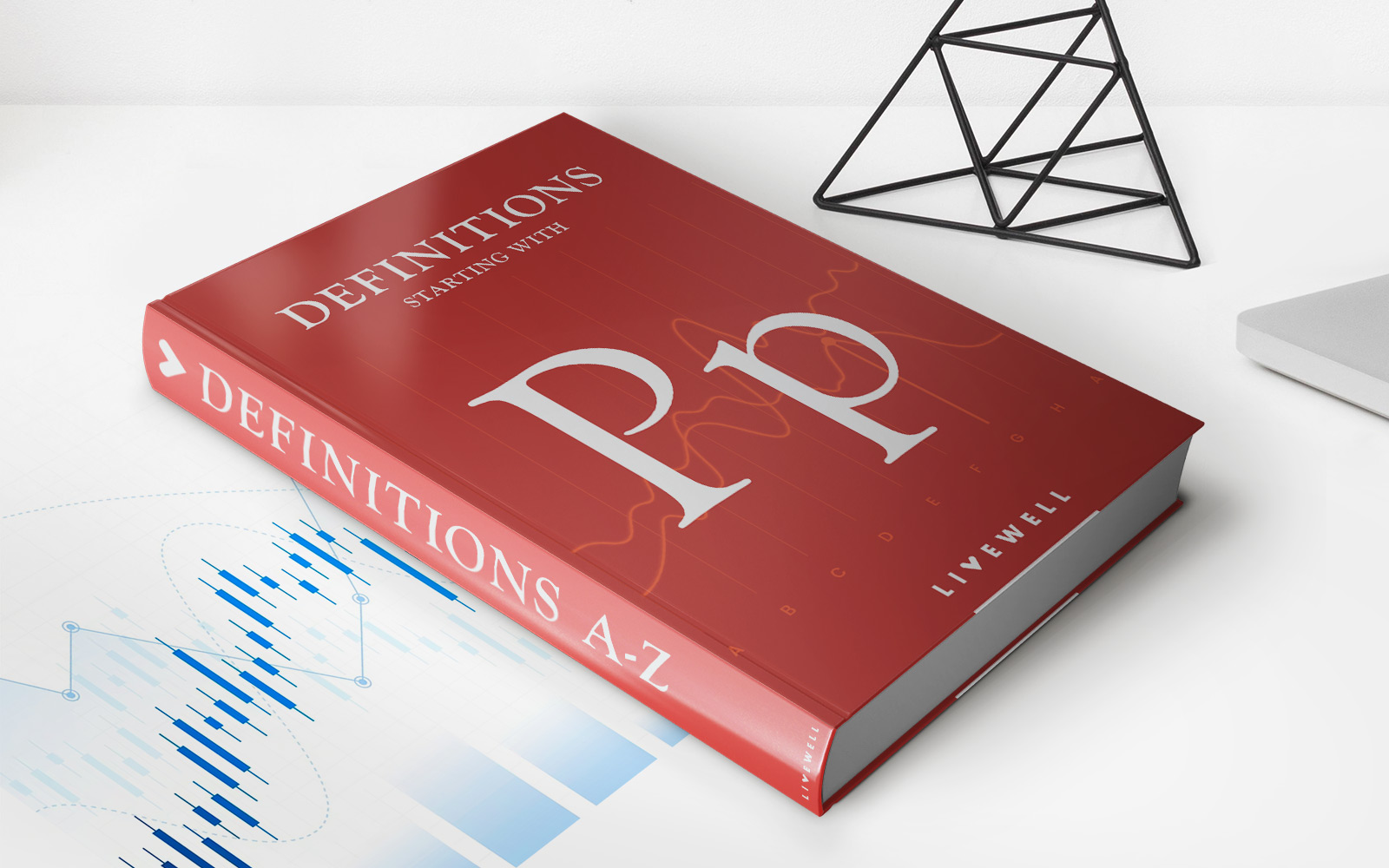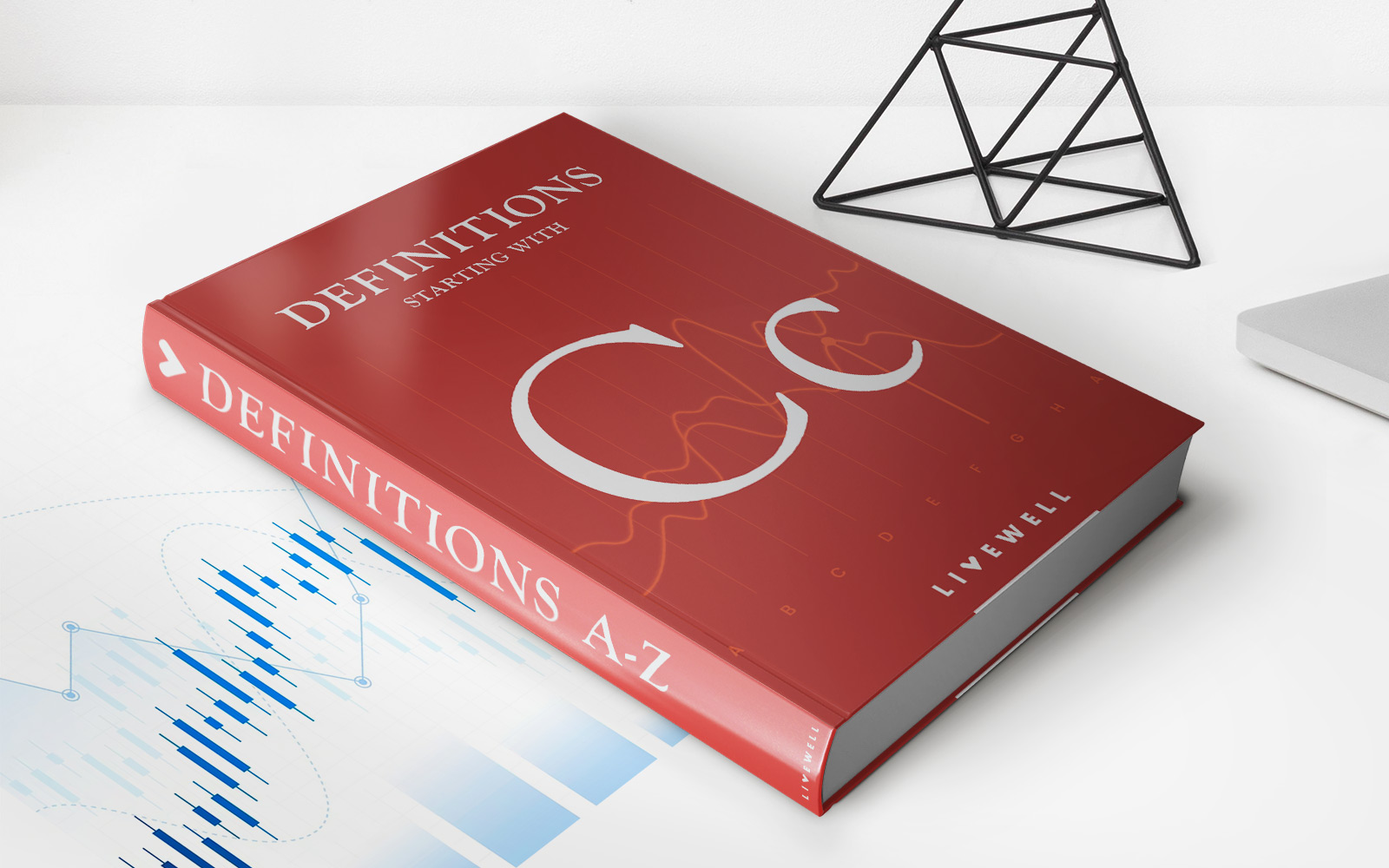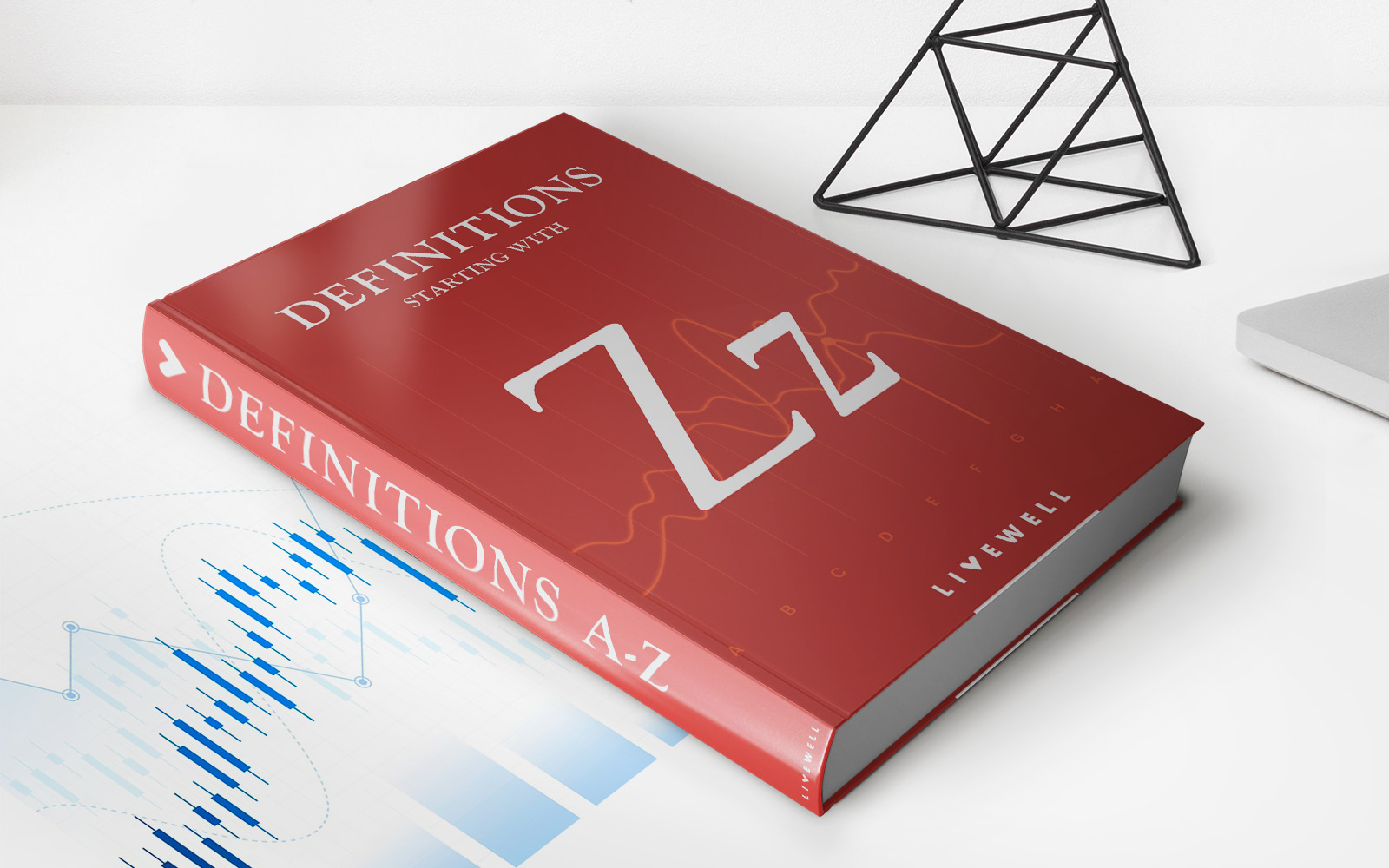

Finance
How To Use Life Insurance For Retirement
Published: October 15, 2023
Learn how to strategically use life insurance as a powerful financial tool for retirement planning. Maximize your savings and secure your future with smart financial decisions.
(Many of the links in this article redirect to a specific reviewed product. Your purchase of these products through affiliate links helps to generate commission for LiveWell, at no extra cost. Learn more)
Table of Contents
- Introduction
- Understanding Life Insurance
- The Benefits of Using Life Insurance for Retirement
- Determining Your Life Insurance Needs
- Selecting the Right Life Insurance Policy
- Strategies for Using Life Insurance for Retirement
- Planning for Retirement with Life Insurance
- Potential Pitfalls and Considerations
- Conclusion
Introduction
Life insurance is a financial tool that provides protection and peace of mind for individuals and their loved ones. While it is commonly associated with providing a death benefit to beneficiaries, life insurance can also play a crucial role in retirement planning. Utilizing life insurance as a retirement strategy allows individuals to build a source of tax-efficient income and supplement their existing retirement savings.
In this article, we will explore the various ways in which life insurance can be utilized for retirement planning. We will discuss the different types of life insurance options available and how to determine the appropriate coverage amount based on individual needs. Additionally, we will provide strategies for maximizing the benefits of life insurance for retirement and highlight potential considerations and pitfalls to be aware of.
It’s important to note that using life insurance for retirement is not a one-size-fits-all approach. The suitability of this strategy depends on individual circumstances, goals, and risk tolerance. Consulting with a knowledgeable financial advisor or insurance professional is essential to ensure that the chosen life insurance solutions align with specific retirement objectives.
Now, let’s dive into the world of life insurance and uncover how it can be effectively used as a tool for retirement planning.
Understanding Life Insurance
Before delving into its role in retirement planning, it is necessary to understand the fundamentals of life insurance. Life insurance is a contract between an individual (the policyholder) and an insurance company. In exchange for regular premium payments, the insurance company agrees to provide a death benefit to the policyholder’s beneficiaries upon their passing.
There are various types of life insurance policies available, such as term life insurance, whole life insurance, and universal life insurance. Term life insurance provides coverage for a specific term, typically 10, 20, or 30 years, and pays out a death benefit if the policyholder passes away during that period. Whole life insurance, on the other hand, offers coverage for the policyholder’s entire lifetime and includes a cash value component that grows over time. Universal life insurance combines the features of both term and whole life insurance, providing flexibility in premium payments and a cash value component.
When considering life insurance for retirement planning, the type of policy selected plays a significant role. Term life insurance is often the most affordable option, making it suitable for individuals who primarily require coverage during their working years. Whole life insurance and universal life insurance provide a permanent death benefit and can be utilized for lifelong retirement income.
Furthermore, life insurance policies can also include riders or additional benefits that can be customized to meet specific needs. For instance, some policies offer accelerated death benefits, which allow the policyholder to access a portion of the death benefit in the event of a terminal illness diagnosis. Other riders may provide coverage for critical illness, disability, or long-term care expenses.
Understanding the different types of life insurance policies and the additional benefits they offer is crucial in determining the most suitable option for retirement planning. The right policy will depend on individual goals, financial circumstances, and risk tolerance.
The Benefits of Using Life Insurance for Retirement
Using life insurance as part of your retirement strategy can offer several advantages. Let’s explore the key benefits:
- Tax-efficient retirement income: One of the primary advantages of utilizing life insurance for retirement is the potential for tax efficiency. Unlike traditional retirement accounts, such as 401(k)s or IRAs, life insurance policies can provide tax-free withdrawals or loan provisions, allowing you to access the accumulated cash value without incurring tax liabilities. This can be especially beneficial for individuals who have maxed out their contributions to retirement accounts and are looking for additional tax-advantaged income sources.
- Protection during market downturns: Life insurance policies with cash value components can provide a level of protection during market downturns. While traditional investment accounts may experience volatility and losses, the cash value within a life insurance policy is typically guaranteed by the insurance company and can continue to grow regardless of market conditions. This can offer a sense of stability and financial security during retirement.
- Legacy planning: Life insurance allows you to leave a financial legacy to your loved ones or favorite charities. By designating beneficiaries, you can ensure that your loved ones are financially protected and receive a tax-free death benefit upon your passing. This can be especially advantageous for individuals with significant assets who want to preserve their wealth and provide for future generations.
- Flexibility and control: Life insurance policies provide flexibility and control over your retirement income. Depending on the policy type and options chosen, you may have the ability to adjust your premium payments, access cash value, and customize the death benefit based on your changing needs.
It’s important to note that the benefits of using life insurance for retirement are contingent upon properly structured policies and sound financial planning. Consulting with a knowledgeable financial advisor or insurance professional can help ensure that the chosen life insurance solutions align with specific retirement goals and provide the desired benefits.
Determining Your Life Insurance Needs
When using life insurance for retirement planning, it is crucial to assess your life insurance needs accurately. Determining the right coverage amount and policy type will depend on various factors, such as your current financial situation, retirement goals, and obligations.
Evaluate your financial obligations: Start by evaluating your financial obligations and responsibilities. Consider factors such as outstanding debts, mortgage or rent payments, dependent children, and future education expenses. The purpose of life insurance is to provide financial protection for your loved ones, so it’s important to determine how much coverage is needed to meet these obligations and maintain their quality of life should something happen to you.
Assess your retirement income gap: Calculate your retirement income needs and evaluate whether your current retirement savings and investments can cover those expenses. If there is a gap between your desired retirement income and your projected retirement savings, life insurance can serve as a tool to bridge that gap. The death benefit can provide an additional source of income for your surviving spouse or beneficiaries, ensuring that their financial needs are met throughout their retirement years.
Consider your time horizon: Assessing your time horizon is essential in determining the appropriate life insurance policy type. If you are in the early stages of your career and have several decades until retirement, a term life insurance policy may be suitable as it offers coverage for a specific period. On the other hand, if retirement is on the horizon or you prefer a permanent solution, such as whole life insurance or universal life insurance, these policies can provide lifelong coverage and the potential for cash value accumulation.
Review your risk tolerance: Consider your risk tolerance when selecting a life insurance policy. Term life insurance often offers the lowest premiums but does not accumulate cash value. Whole life insurance and universal life insurance, while providing lifelong coverage and cash value growth, may have higher premiums. Assess your comfort level with risk and your willingness to pay higher premiums for additional benefits and potential cash value accumulation.
Consult a financial advisor or insurance professional: To determine your precise life insurance needs, it is recommended to seek guidance from a financial advisor or insurance professional. They can help assess your specific situation, provide personalized advice, and recommend the most suitable life insurance policy that aligns with your retirement goals.
By evaluating your financial obligations, assessing your retirement income needs, considering your time horizon, reviewing your risk tolerance, and seeking professional guidance, you can determine the appropriate life insurance coverage that best fits your retirement planning needs.
Selecting the Right Life Insurance Policy
Choosing the right life insurance policy is a critical step in utilizing life insurance for retirement planning. There are various factors to consider when selecting a policy that aligns with your financial goals and retirement needs.
Policy Type: Evaluate the different types of life insurance policies available, such as term life insurance, whole life insurance, and universal life insurance. Each type has unique features, benefits, and cost structures. Assess your risk tolerance, budget, and long-term objectives to determine which policy type suits your retirement planning needs.
Coverage Amount: Determine the appropriate coverage amount by assessing your financial obligations, desired retirement income replacement, and any existing savings or investments you have. Consider factors such as outstanding debts, mortgage or rent payments, education expenses, and future healthcare costs.
Cost: Understand the cost structure of the life insurance policy you are considering. Premiums for term life insurance policies are typically lower than whole life insurance or universal life insurance policies. Whole life insurance and universal life insurance, however, offer potential cash value growth and other benefits, which may justify the higher premiums.
Financial Strength of the Insurance Company: Research and evaluate the financial strength and reputation of the insurance company you are considering. Look for companies with strong ratings from independent rating agencies, as this indicates their ability to meet their financial obligations and deliver on their promises.
Policy Riders and Additional Benefits: Consider the riders and additional benefits offered with the life insurance policy. Riders can provide added protection and flexibility by allowing you to customize the policy to suit your specific needs. Common riders include accelerated death benefits, critical illness coverage, and long-term care benefits.
Flexibility: Consider the flexibility offered by the policy. Evaluate features such as the ability to adjust premium payments, access cash value, and convert or exchange the policy if needed. Flexibility is crucial in ensuring that the chosen policy can adapt to your changing financial circumstances and retirement goals.
Professional Advice: Seek guidance from a financial advisor or insurance professional who specializes in retirement planning. They can help assess your specific needs, provide objective advice, and recommend the most suitable life insurance policy for your retirement goals.
By carefully considering the policy type, coverage amount, cost, insurance company’s financial strength, policy riders and benefits, flexibility, and seeking professional advice, you can select the right life insurance policy that aligns with your retirement planning objectives.
Strategies for Using Life Insurance for Retirement
When utilizing life insurance for retirement, there are several strategies that can help maximize the benefits and secure a stable income stream throughout your golden years. Here are some popular strategies to consider:
- Life Insurance as an Income Replacement: Determine the income gap you need to fill during retirement. If there is a shortfall in your retirement savings, a life insurance policy with a cash value component can provide a steady income stream. You can withdraw or borrow against the cash value, supplementing your retirement income without incurring additional taxes.
- Tax-Free Policy Loans: If you have accumulated cash value in your life insurance policy, you can take out a tax-free policy loan to fund your retirement expenses. These loans do not trigger a taxable event and can provide a source of income during retirement.
- Using Life Insurance as a Pension Alternative: In the absence of a traditional pension plan, life insurance can be used to create a pseudo-pension. By utilizing a portion of your retirement savings to purchase an annuity or a permanent life insurance policy, you can receive regular income payments throughout your retirement years.
- Combining Life Insurance with other Retirement Accounts: Life insurance can complement your existing retirement accounts, such as 401(k)s or IRAs. By using life insurance as a tax-efficient income source, you can strategically withdraw funds from your retirement accounts while allowing the cash value in your life insurance policy to grow tax-free.
- Employer-Sponsored Life Insurance: Take advantage of any employer-sponsored life insurance programs. While these policies might not provide the full coverage needed in retirement, they can serve as a foundation to build upon or enhance an individual life insurance policy purchased outside the workplace.
- Consider a Laddering Strategy: A laddering strategy involves purchasing multiple life insurance policies with different coverage amounts and term lengths. This approach allows you to align your coverage needs with different stages of your retirement and adjust your coverage as your financial obligations change over time.
- Review and Adjust Regularly: Life insurance needs can change over time due to factors such as lifestyle adjustments, income changes, or shifting retirement goals. Regularly review your life insurance policies and make adjustments as needed to ensure they align with your evolving retirement plans.
It’s important to consult with a qualified financial advisor or insurance professional to evaluate these strategies in the context of your unique situation. They can provide personalized guidance and help you select the most suitable approach to using life insurance effectively for your retirement needs.
Planning for Retirement with Life Insurance
Planning for retirement requires careful consideration of various financial tools, and life insurance can play a vital role in securing a successful retirement. Here are key aspects to consider when incorporating life insurance into your retirement plan:
Start Early: The earlier you start planning for retirement, the more time you have to build up the cash value in your life insurance policy. Time allows for greater potential growth and gives you the flexibility to adjust your coverage as needed throughout your working years.
Assess Your Needs: Evaluate your retirement income goals, anticipated expenses, and existing savings. This analysis will help determine the appropriate coverage amount and policy type required to bridge any potential income gaps during retirement.
Coordinate with Other Retirement Accounts: Coordinate your life insurance strategy with your other retirement accounts, such as 401(k)s or IRAs. By strategically withdrawing from these accounts while utilizing the cash value from your life insurance policy, you can optimize your retirement income and potentially minimize taxable distributions.
Consider Longevity Risks: Incorporate life insurance into your retirement plan to mitigate longevity risks. A life insurance policy can provide a death benefit to protect your loved ones and ensure financial stability, even if you outlive your retirement savings.
Revisit Your Coverage Regularly: Life insurance needs can change over time due to factors such as lifestyle adjustments, fluctuations in income, or changes in financial goals. Review your life insurance policy regularly to ensure it continues to align with your evolving retirement plans.
Seek Professional Guidance: Consulting with a qualified financial advisor or insurance professional is essential when planning for retirement with life insurance. They can provide personalized advice based on your unique circumstances, help select the most suitable policy, and help you navigate the complexities of retirement planning.
Consider Other Factors: While life insurance can be a valuable tool, it should not be the sole component of your retirement plan. It’s important to diversify your investments, actively manage your retirement accounts, and keep abreast of any changes in tax laws or regulations that may impact your retirement strategy.
Remember, retirement planning is a long-term endeavor, and it’s important to regularly evaluate and adjust your financial plans as needed. By incorporating life insurance into your retirement strategy, you can provide financial stability, protect your loved ones, and ensure a comfortable retirement for yourself.
Potential Pitfalls and Considerations
While using life insurance for retirement planning can offer several benefits, it is important to be aware of potential pitfalls and considerations. Here are some key points to keep in mind:
Cost: Life insurance premiums can vary significantly depending on factors such as age, health, and coverage amount. It’s important to fully understand the costs associated with the chosen policy, as higher premiums can impact your budget and overall retirement planning.
Evaluating Policy Performance: The performance of a life insurance policy, particularly those with cash value components, can be influenced by various factors. It’s essential to regularly review the policy’s performance, including the crediting rate for cash value growth and any fees or surrender charges, to ensure it aligns with your expectations and financial goals.
Tax Considerations: While life insurance policies can provide tax advantages, it’s important to understand the tax implications associated with withdrawals, loans, or surrendering the policy. Consulting with a tax advisor can help ensure you are fully aware of any potential tax consequences and can make informed decisions based on your individual circumstances.
Health and Eligibility: Life insurance policies typically require a medical examination and underwriting process to determine eligibility and premium rates. Pre-existing health conditions could impact your ability to secure coverage or result in higher premiums. It’s important to consider your health and insurability when planning for retirement with life insurance.
Changing Needs: Over time, your financial goals and retirement needs may evolve. It’s crucial to regularly reassess your life insurance coverage to ensure it aligns with your changing circumstances. This may involve adjusting coverage amounts, policy types, or riders to better reflect your current situation.
Policy Lapse: If premium payments are not made consistently, a life insurance policy can lapse, resulting in a loss of coverage and potential forfeiture of accumulated cash value. It’s important to understand the policy’s requirements and commit to maintaining premium payments to ensure the policy remains in force until retirement.
Policy Legitimacy: When purchasing life insurance, it’s crucial to verify the legitimacy and financial strength of the insurance company. Research their ratings from reputable rating agencies and ensure the company has a solid track record of honoring policy claims.
By being aware of these potential pitfalls and considerations, you can make more informed decisions when incorporating life insurance into your retirement planning. Regularly reviewing your policy, staying informed about changes in regulations and tax laws, and seeking professional guidance can help you navigate any challenges that may arise.
Conclusion
Incorporating life insurance into your retirement plan can offer significant benefits and provide additional financial security for you and your loved ones. By understanding the different types of life insurance policies, determining your coverage needs, and selecting the right policy, you can use life insurance as a valuable tool to supplement your retirement income and protect your financial well-being.
When utilizing life insurance for retirement, it’s crucial to consider various strategies such as using life insurance as income replacement, taking advantage of tax-free policy loans, and coordinating with other retirement accounts. Regularly reviewing your coverage, assessing policy performance, and adapting to changing needs will ensure that your life insurance plan remains relevant and effective throughout your retirement journey.
However, it’s important to be mindful of potential pitfalls and considerations, such as the cost of premiums, tax implications, and the changing nature of your financial needs. By staying informed, seeking professional guidance, and regularly reviewing your policy, you can navigate these potential challenges and make informed decisions that align with your retirement goals.
In conclusion, life insurance can serve as a valuable asset in your retirement planning toolkit. It can provide tax-efficient income, protect your loved ones, and offer stability during market uncertainties. By carefully considering your individual circumstances, evaluating your retirement goals, and seeking professional advice, you can use life insurance effectively to pave the way toward a secure and fulfilling retirement.














